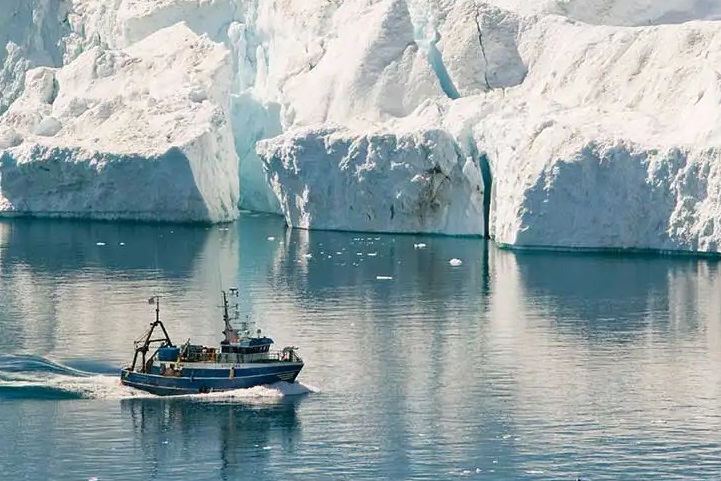11 Dec 2024

Tired Earth
By The Editorial Board

Models of sea level rise based on our understanding of how Earth's ice sheets respond to a warming atmosphere could be incorrect, a new study has found. This could have significant implications for future predictions of global sea level rise from the Greenland and Antarctic ice sheets.
Climate change is resulting in sea level rise as ice on land melts and oceans expand. How much and how fast sea levels will rise in the near future will depend, in part, on the frequency of glacier calving events. These occur when large chunks of ice detach from glaciers that terminate in the ocean (known as tidewater glaciers), and fall into coastal fjords as icebergs. The faster these glaciers flow over the ground towards the ocean, the more ice enters the ocean, increasing the rate of sea level rise.
During the warmer summer months, the surface of Greenland's glaciers can melt and form large lakes that may then drain through to the base of the glacier. Studies on the inland Greenland ice sheet have shown that this reduces friction between the ice and ground, causing the ice to slide faster for a few days. Up to now, however, it has been unclear whether such drainage events affect the flow speed of tidewater glaciers, and hence the rate of calving events.
To investigate this, a research team from Oxford University's Earth Sciences department, the Oxford University Mathematical Institute, and Columbia University used Global Positioning System (GPS) observations of the flow speed of Helheim Glacier -- the largest single-glacier contributor to sea level rise in Greenland. The GPS captured a near perfect natural experiment: high-temporal-resolution observations of the glacier's flow response to lake drainage.
The results found that Helheim Glacier behaved very differently to the inland ice sheet, which shows a fast, downhill movement during lake drainage events. In contrast, Helheim Glacier exhibited a relatively small 'pulse' of movement where the glacier sped up for a short amount of time and then moved slower, resulting in no net increase in movement.
Using a numerical model of the subglacial drainage system, the researchers discovered that this observation was likely caused by Helheim glacier having an efficient system of channels and cavities along its bed. This allows the draining waters to be quickly evacuated from the glacier bed without causing an increase in the total net movement.
Although this appears positive news in terms of sea level rise implications, the researchers suspected that a different effect may occur for glaciers without an efficient drainage system where surface melt is currently low but will increase in future due to climate change (such as in Antarctica).
They ran a mathematical model based on the conditions of colder, Antarctic tidewater glaciers. The results indicated that lake drainages under these conditions would produce a net increase in glacier movement. This was largely due to the less efficient winter-time subglacial drainage system not being able to evacuate flood waters quickly. As of yet, however, there are no in situ observations of Antarctic tidewater glacier responses to lake drainage.
The study calls into question some common approaches for inferring glacial drainage systems based on glacier velocities recorded using satellite observations (which are currently used in sea level rise models).
Lead author Associate Professor Laura Stevens (Department of Earth Sciences, Oxford University) said: 'What we've observed here at Helheim is that you can have a big input of meltwater into the drainage system during a lake drainage event, but that melt input doesn't result in an appreciable change in glacier speed when you average over the week of the drainage event.'
With the highest temporal resolution of satellite-derived glacier speeds currently available being roughly one week, lake drainage events like the one captured in the Helheim GPS data usually go unnoticed.
'These tidewater glaciers are tricky,' Associate Professor Stevens added. 'We have a lot more to learn about how meltwater drainage operates and modulates tidewater-glacier speeds before we can confidently model their future response to atmospheric and oceanic warming.'
Source : sciencedaily.com
Comment